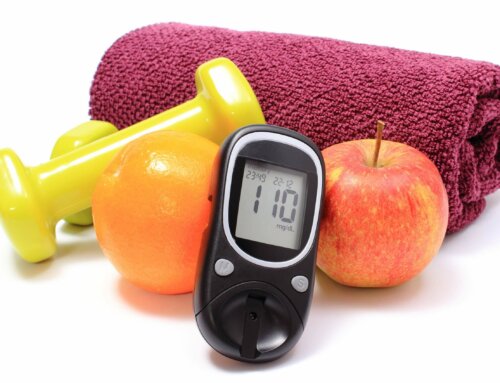The lazy days of summer can cause easy weight gain and elevated sugars, since many people like to stay out of the hot kitchen and either grab a quick meal or enjoy a full dining experience. Realize that dining out is all about choices, and it is up to you to make the best ones if you want to control your blood sugars. Let’s explore some easy ways to have fun, enjoy the meal and make good choices.
- Start by checking the menu options online. If you see what is available prior to even sitting down when you are already starving you may make more informed decisions. Making a plan before entering the restaurant can often provide ease of mind. Many restaurant chains now offer nutritional content (carbohydrate, fat, sugar, and sodium amounts – along with calories) online and at the restaurant. This seems to be more common with private eating places as well. Also find out what the evening specials are which tend to be the most fresh.
- Consider drinking two glasses of water prior to the meal which can take the edge off hunger. Do not do this if you are on fluid restrictions, have low sodium or are on water pills.
- When ordering, do not be shy. Whether it is a high-end restaurant or a fast food chain you still have choices, especially if you ask in a non-threatening way. Not all restaurants will accommodate you, but it is worth asking. Ask questions about the ingredients or food descriptions. Ask for it “your way”. You can ask for no added salt, MSG, butter, oil or cream sauces. You can request cooking or sautéing with olive oil in place of butter. More and more people are concerned about their health when dining out and restaurants know this.
- Look for restaurants that have farm to table ingredients. Many local small restaurants are trying to buy locally for freshness and healthy choices along with cheaper prices which will be passed on to you. Things which are grown in your area will be less expensive. Many restaurants are even planting their own vegetable and herb gardens, so take advantage of this fresh and delicious produce.
- Find diabetes friendly restaurants. Many places want to find a special niche. Some privately owned restaurants enjoy the challenge of cooking unique meals for their customers. They think of it as a privilege to prepare new dishes that are considered more healthful. Risotto made with pureed white beans can be as delicious as risotto made with cream, cheese and butter with a third of the calories and fat.
- Start your meal with a cup of soup or small salad (dressing on the side, or oil and vinegar) which will help fill you up and can usually be added for a nominal fee.
- Search the bread basket. Instead of grabbing the first thing look it over and choose the heavy grainy bread with seeds and nuts for added fiber. Skip the soft doughy white rolls. Eat the hard crackers or flat breads with seeds over white French bread. Forget the butter and ask for olive oil for dipping. Although high in calories, it is a healthier choice, so dip in moderation.
- Ask about substitutions. Many restaurants frown upon this but others are willing to make the changes. Ask for 2 green vegetables instead of the French fries especially if you plan to eat some bread or have a dessert. Look for vegetables that are steamed, baked or grilled.
- Order a baked or sweet potato instead of scalloped, creamed or Lyonnais’s potatoes. Get the cheese, bacon bits, butter and sour cream on the side and use sparingly. Think about using salsa and chives to replace all that fat for your potato. Substitute brown rice, cous-cous or Basmati rice over plain white rice if you have an option. Eat the parsley garnish.
- Look over the entire menu instead of ordering the usual Chicken Parmesan. Fried smothered chicken in cheese may not be the best option. Consider foods with wine, lemon or piccata sauce instead, as these sauces have less sugar and fat.
- Order 2 appetizers instead of a main course. Pick a shrimp appetizer as one.
- Share a main course after you eat an appetizer.
- Ask for a doggy bag and cut your main course in half before you dig in.
- Many beverages have calories and hidden sugars. House ice teas are often already sweetened so just skip them; at least ask if the tea is pre-sweetened. Stay away from the Lemonade or fruit punch. Skip all soda except diet soda. Ask for ice coffee which is a great summer refresher, or seltzer/club soda with a lemon, lime, or orange slice. Hot coffee with some low fat milk is a nice ending to a meal. You can splurge and have regular cream in your coffee in moderation (fat calories).
- Stick to the basics when ordering a cocktail. Stay away from the usual summer drinks including Rum Runners, Pina Coladas or Margaritas since they are full of sugar and high in calories. Order dry wine (if you drink and have permission from your MD), light beer, or hard liquor including scotch and water, vodka with diet soda, or gin and diet tonic. Even fresh fruit juice should be avoided in your cocktails. You can use diet cranberry juice or tomato juice.
- Socialize. Make the food an experience. Do not rush through your meal. Try to savor the flavors, the decor, and the fact that someone is serving you. Chew slowly and taste your food. Put your fork and knife down between bites. Tell stories during the meal. Use your non-dominant hand. Bring or ask for chop sticks to slow your eating down.
- Have dessert. If you decide you want dessert, try to factor this in at the start of the meal. Understand you can delete other carbohydrates such as bread, beans or potatoes and eat dessert. Order a protein like fish, chicken or a pork chop with 2 vegetables and then have dessert. It is more about the total amount of carbohydrates than the actual choices. Dessert should be a treat and a once in awhile thing, since other carbohydrate choices may have more nutritional value.
- Share a dessert or just take a taste.
- Keep dessert simple. Order plain cheese cake instead of gooey, syrupy, fruit covered cheese cake for better blood sugars. Order the fresh fruit plate instead of sorbet. Have some dark chocolate with nuts instead of a banana split. Look for desserts with whole grain crusts.
- Make sure to take your medications as prescribed. Rapid acting insulin including Novolog, Aphrida, or Humalog should be taken 10 minutes before eating your food. Do not take the insulin at home, in the car, or after the meal for convenience as you will not get the best results. You can excuse yourself when the meal comes or take your injection at the table depending on your level of comfort. Take your Glipizide 30 minutes before the meal and Metformin with the meal. Many other diabetes medications can be taken with or without food so check with your health care provider or pharmacist.
- Splurging. Understand if you decide to splurge be prepared for the possible consequences. Test your blood sugars 2 hours after the first bite of food to see how high your blood sugars rise. It is recommended that your blood sugar not exceed 180mg/dl two hours after a meal. You should check with your own health care provider for specific numbers.
- Get right back on track. We are all human and most of us enjoy a great meal. Do not wait for next Monday, the end of the weekend, or the end of the day to get back on track.
- Remember to keep up with your exercise. Even a simple walk after your feast will help lower your blood sugars.
Summer is the perfect time to stay far away from cooking. It does not matter if you grab a grilled chicken sandwich with mustard, lettuce, and tomato or a filet mignon with asparagus with Hollandaise sauce. Enjoy the experience. Order and eat what really appeals to you!
NOTE: Consult your Doctor first to make sure my recommendations fit your special health needs.







Good and very informative article!!
Hi John,
Glad you enjoyed the article and hopefully you can use some of the tips soon. Keep learning!
Most of these tips are great! Better still, however, is to skip the bread, the potatoes and the fruit. (For many of us, beans are also an issue.) Steer clear of breaded meats, poultry and fish, whether baked or fried. Most restaurants will serve double veggies, or veggies and salad, upon request. Said veggies, however, may have been seasoned with sugar. Testing after dine-out meals is a must!
Hi Sharon,
I agree with you that testing 2 hours after a dinner out is a great idea and can give you so much valuable information. Some people with diabetes do not want to give up bread, potatoes, fruit or beans so we continue to teach them to follow ADA and AADE guidelines of portion sizes and carbohydrate servings in moderation. Many people with diabetes have no problem tolerating complex carbohydrates along with healthy fats and protein. I always suggest that you do what is best for you since you know your own body and always work with your health care provider who knows your blood work and how you individually react.
Best of luck,
Nurse Robbie
Bread for a diabetic??? That’ll make blood sugar skyrocket! Hell no! I follow diabetologist Dr. Richard K. Bernstein’s recommendations as outlined in his book, “Diabetes Solution” and I follow a very low carb diet. My fasting blood sugar when I woke up this morning was 83.
Peter – I am happy that your current diet is working for you and your fasting blood sugar are great!! Most people with diabetes do not have the ability to follow such a strict “No Carbs” eating plan. I am only suggesting the guidelines based on all the accredited associations which recommend carbohydrates in moderation throughout the day. Bread turns to sugar but so does every carbohydrate. So bread is not off limits unless you want it to be. As I mentioned in my article, when choosing bread pick the healthier kinds which include the heavy grainy bread with seeds and nuts for added fiber. Continue to do what works for you and always check with your health care provider.
You must have made these suggestions with the type 2 diabetic in mind.
I don’t know of a type 1 diabetic who would even consider a meal of risotto and bread and dessert and cranberry juice ( even diet) Look at the amount of carbs/insulin needed for a meal like this and that doesn’t include coffee and milk ( really?:( so you can ruin every nutrient you’ve just ingested?)
Please consider suggesting LOW carb – vegetable oriented dishes for us diabetics… it makes so much more sense.
Thanks so much for your comment, my article provided a few options based on guidelines suggested by professional diabetes organizations and food intake. It’s best to make good choices and always pick carbohydrates specific to you and in moderate amounts based on your individual needs- whether type 1 or 2. One of the options was to skip bread and potatoes if you choose dessert –not eat all of the above. I see many people with type 1 diabetes who can vary the insulin amount based on their intake and who are not willing to totally give up on all carbohydrates. I often write about low carbohydrate selections and I LOVE vegetables, however not everyone with diabetes chooses to only eat vegetables. I am glad you are doing a terrific job regulating your blood sugars and wish you continued success. Thanks again for your comment.
Nurse Robbie